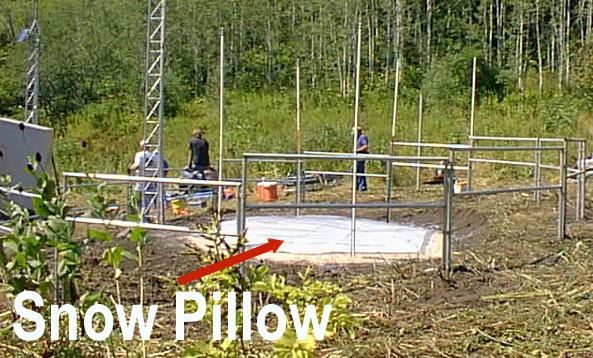

|
Map courtesy of Natural Resources and Conservation Service The dots on this map mark the locations of automated stations that measure how much snow has fallen. The system, called SNOTEL (for SNOwpack TELemetry) is operated by the Natural Resource and Conservation Service. SNOTEL instruments help scientists to know how much snow sits in these remote mountainous locations, so that they don't have to visit the areas to make measurements.
Important predictions . . . A pillow sensitive to pressure . . . Although SNOTEL sites have several types of weather instruments, the most interesting is the "snow pillow" (see picture below). The pillow is made of various materials including steel, rubber, and a material called hypalon. It is filled with a solution of antifreeze (50/50 mix of water and ethanol). As snow accumulates on the pillow, it increases the pressure within the pillow. A fluid line runs from the pillow to the shelter where an electronic device determines and records the snow's water equivalent. Periodically radio waves transmit this and other data to climatologists.
Unique to the West . . . Below: This photo, taken in Colorado, shows a SNOTEL site being prepared for the upcoming winter.  Photo courtesy of
Institute of Arctic & Alpine Research
Terms: telemetry, reservoir |

 |
*SNOTEL web site |
 |
Past pictures of the week |
 |
Next picture of the week |
|
Earth Science Teacher at Helena High School |